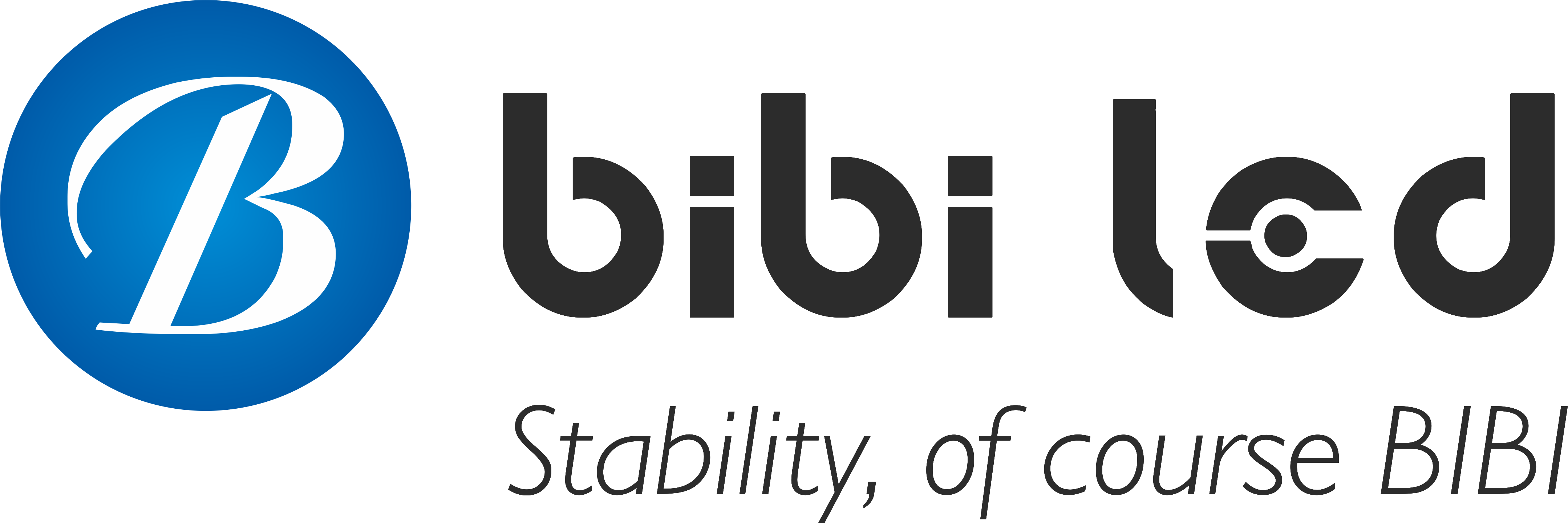Introduction
Today, let’s discuss something incredibly practical—LED displays.
You might think they’re nothing special, but they actually play a huge role in our daily lives, especially on the road!
Let’s take a deeper look at how LED displays improve road safety warnings!
Table of Contents
1. Why do we need LED displays for road safety warnings?
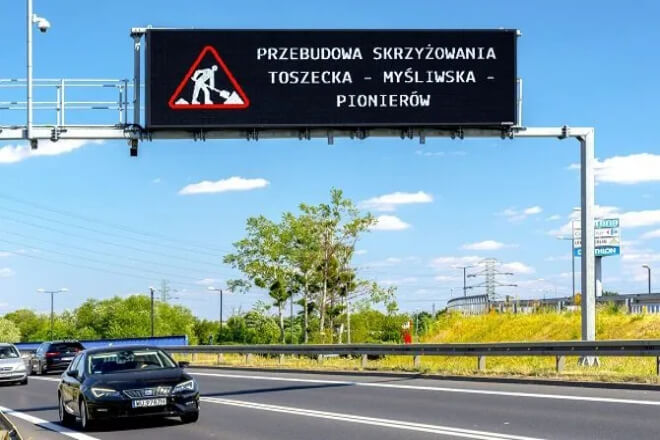
On the road, timely delivery of safety information is crucial. However, traditional traffic signs often have limitations.
Most signs have fixed messages, such as “Construction Ahead” or “Speed Limit 80.”
In the event of an accident or temporary road closure, drivers may not be immediately aware of them, missing opportunities to detour.
Furthermore, conventional signs have limited visual impact. Even with reflective material, they can only be seen under good conditions.
And the information they provide is limited, making them unable to simultaneously highlight multiple risks.
LED displays can address these issues. Their self-luminous, high brightness makes them clearly visible even at night, in fog, and in the rain. They can also be seen from a distance, giving drivers more time to react.
More importantly, in the event of an emergency, LED screens can update information in real time.
Such as “Accident Ahead, Please Take Exit XX,” allowing drivers to quickly adjust their routes and avoid congestion and secondary accidents.
In general, LED screens are more flexible, eye-catching, and timely than traditional signs.
They not only make road warnings more visible but also enable rapid information dissemination in emergency situations, making them a powerful tool for improving road safety.
2. What are the Core Advantages of LED Screens in Road Safety?
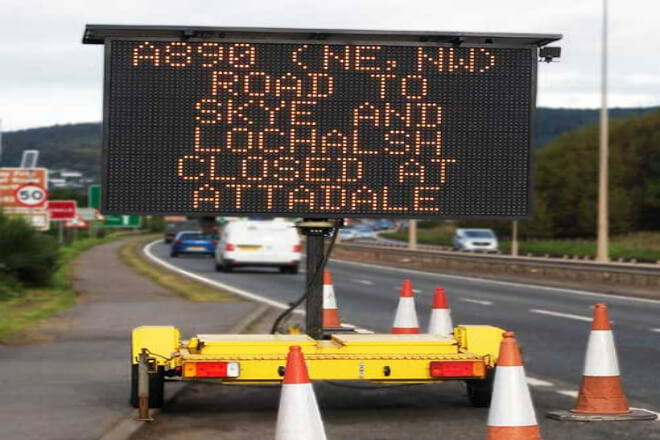
LED screens are playing an increasingly important role in road safety warnings, with several key advantages.
First, high brightness and long-range visibility. Whether in bright sunlight during the day or dimly lit at night, LED screens clearly display information.
For example, on highways, LED screens can alert drivers to accidents or construction ahead, allowing them to slow down or take a detour even hundreds of meters away, significantly reducing the risk of rear-end collisions.
Second, they offer the flexibility of dynamic information updates. In the event of temporary road closures, traffic accidents, or sudden weather changes.
LED screens can instantly deliver the latest information, while traditional signs are limited to displaying fixed content.
For example, LED screens can update within minutes to inform drivers of landslides or highway closures caused by heavy rain, allowing them to quickly adjust their routes and reduce congestion.
Third, color and graphics enhance attention. LED screens can use flashing red, yellow warning icons, or arrows to indicate directions, making them more attractive to drivers than standard signs.
For example, LED warning screens at tunnel entrances, with flashing arrows indicating speed limits and upcoming congestion, are more eye-catching than static signs.
Finally, energy efficiency and long lifespans contribute to low maintenance costs. LED screens have low power consumption and a long lifespan.
Significantly reducing operating costs compared to traditional signboards that require frequent repairs or replacements.
For example, LED screens have long been used on major roads and at toll booths in some cities, requiring minimal maintenance while maintaining reliable warnings around the clock.
In summary, their high brightness, dynamic updates, attractive colors and graphics, and low maintenance costs make LED screens an effective and reliable “safeguard” for road safety warnings.
3. How LED Displays Improve Road Safety Warnings
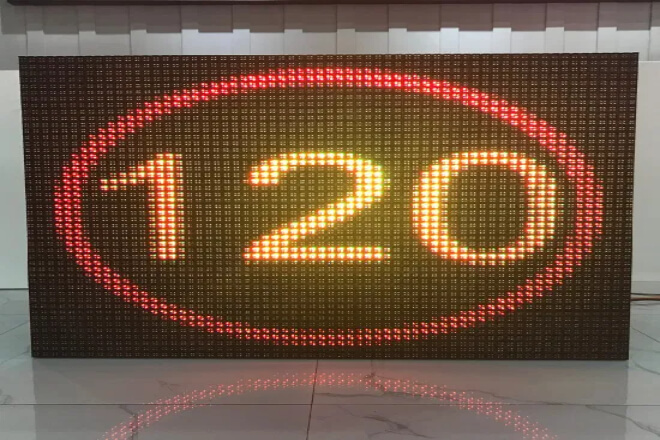
LED displays effectively enhance road safety warnings primarily because they offer advantages over traditional signage in terms of visuals, information transmission, and psychological impact.
First, they attract attention. LED displays capture drivers’ attention with vibrant colors and dynamic effects, especially in complex road environments.
Where they contrast sharply with static road signs and billboards, making them more noticeable.
For example, LED warning screens at tunnel entrances or highway toll booths, with their flashing red arrows or yellow warning symbols, are difficult for drivers to ignore.
Second, they convey information more clearly. The fonts and graphics on LED displays are specifically designed to be concise and clear, allowing drivers to quickly grasp key information.
For example, messages like “Construction ahead, slow down 50 meters” and “Detour through accident area” are concise but clearly targeted, reducing the burden on drivers.
They also have a psychological effect. Warning colors like red and yellow inherently trigger alertness.
And when combined with early warnings of danger, they subconsciously increase drivers’ attention and caution.
For example, a warning on a highway, “Slippery road ahead,” will naturally prompt drivers to slow down and maintain a safe distance.
Finally, they can improve reaction time. LED screens can update information in real time, promptly announcing emergencies or temporary road conditions, giving drivers more time to react and reducing the risk of accidents.
For example, if a road closure is temporarily caused by heavy rain or a traffic accident, LED screens can quickly alert drivers to take detours in advance, avoiding traffic jams or dangerous situations.
In general, LED screens significantly enhance the effectiveness of road safety warnings through visual appeal, clear communication, psychological implications.
And increased reaction time, making drivers more confident and safer in complex road conditions.
4. In what road scenarios can LED screens be effective?
LED screens are very practical in road safety, and their applications vary depending on the road section.
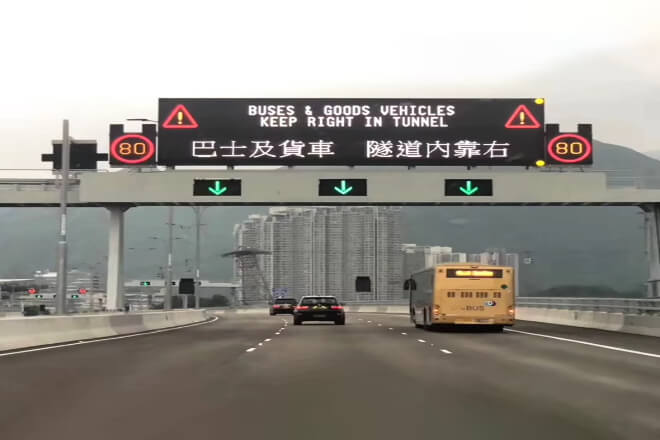
1). On highways:
LED screens can be used for accident warnings and traffic diversion. For example, if a rear-end collision occurs ahead on a section of highway.
The LED screen will immediately display “Accident Ahead, Please Take the Right Exit.”
Drivers can see this warning from hundreds of meters away and slow down or change lanes in advance, avoiding secondary collisions and traffic jams.
2). At urban intersections:
LED screens can work in conjunction with traffic lights to alert pedestrians and vehicles to safety.
For example, at a busy intersection, flashing messages like “Beware of Oncoming Vehicles” and “Please Use Zebra Crossing” are more visible than traditional signs.
Especially on rainy days or at night, effectively reducing the risk of traffic conflicts.
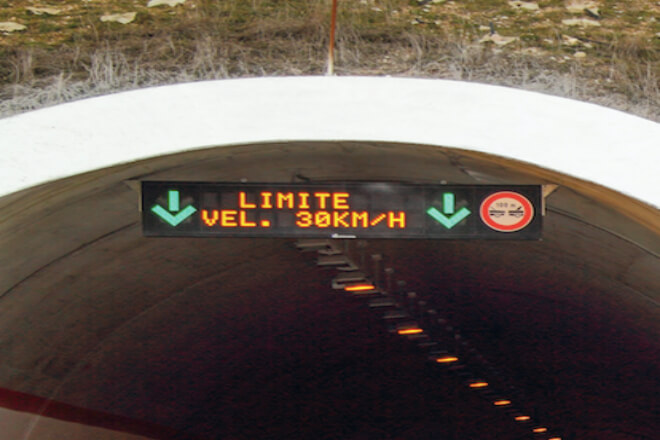
3) In tunnels or high-risk road sections:
LED screens can provide real-time warnings. For example, in a mountain tunnel, a screen might display “Slippery Tunnel, Speed Limit 80” accompanied by a flashing arrow to remind drivers to slow down in advance.
This is more noticeable than static signs and reduces the chance of accidents.
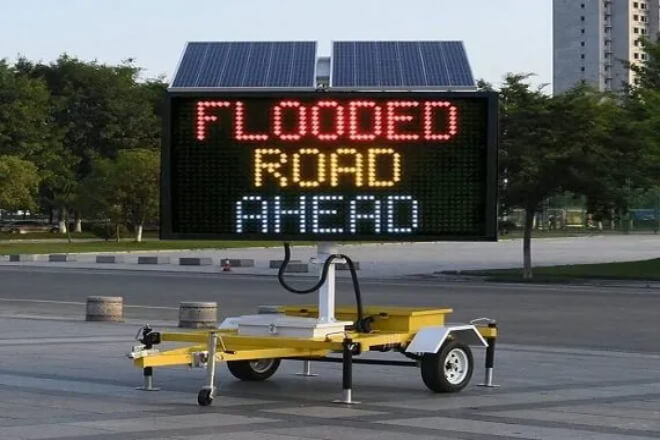
4) At construction sites or temporary traffic control areas:
LED screens can dynamically display information.
For example, during urban road construction, LED screens might display “Construction Ahead, Please Change Lanes in Advance” and “Construction Estimated Completion Time: 6:00 PM.”
Drivers can then choose detours based on these prompts, making traffic management more flexible.
In short, whether on highways, urban intersections, tunnels, or construction sites, LED screens, through their high brightness, dynamic updates.
And intuitive graphics, deliver critical warning information to drivers and pedestrians in a timely manner, significantly improving road safety.
5. Conclusion
Isn’t that interesting? In fact, there are many small details like these in our lives. While seemingly ordinary, they quietly protect our safety.
The next time you see those flashing LED screens on the road, don’t think of them as just ordinary displays; they are our “safety guards” on the road!
Finally, if you would like to learn more about LED screens, please get in touch with us.
